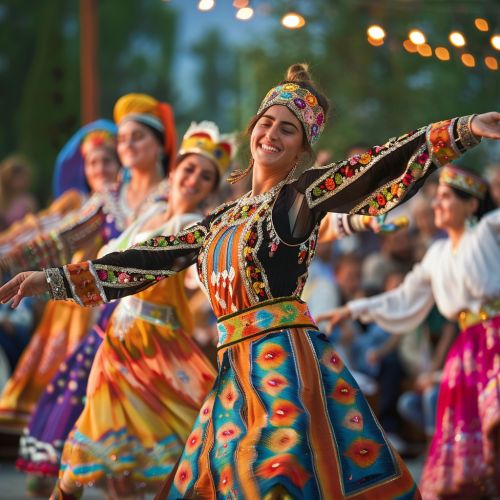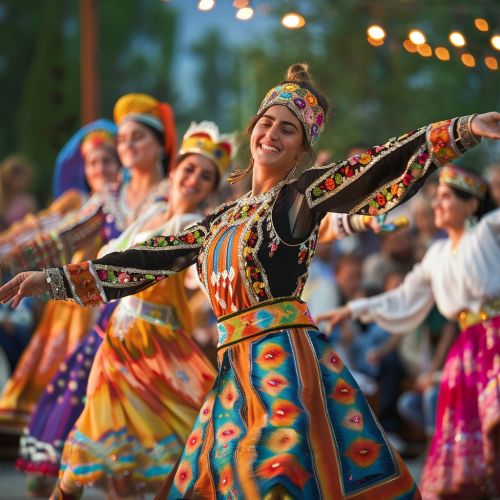Culture of Armenia
History and Origins
The culture of Armenia is a rich tapestry woven from its ancient history, geographic location, and diverse influences. Armenia, located in the South Caucasus region, has a history that dates back to the early Bronze Age. The Armenian people are one of the oldest civilizations in the world, with a unique cultural heritage that has been shaped by various empires and neighboring cultures over millennia.
Language and Literature
The Armenian language, an independent branch of the Indo-European language family, is a cornerstone of Armenian culture. It has two primary dialects: Eastern Armenian and Western Armenian. The creation of the Armenian alphabet by Mesrop Mashtots in 405 AD was a pivotal moment in Armenian history, fostering a rich literary tradition.
Armenian literature has a long and storied history, beginning with early medieval works such as the 5th-century "History of Armenia" by Movses Khorenatsi. The Golden Age of Armenian literature occurred between the 10th and 14th centuries, with notable works like the epic poem "David of Sassoun." Modern Armenian literature has also flourished, with authors like Hovhannes Shiraz and Paruyr Sevak making significant contributions.
Religion
Christianity has played a central role in Armenian culture since the early 4th century when Armenia became the first nation to adopt Christianity as its state religion. The Armenian Apostolic Church, one of the oldest Christian denominations, has been a key institution in preserving Armenian identity and traditions.
The architecture of Armenian churches, characterized by their distinctive domes and cross-stones (khachkars), is a testament to the deep religious and cultural heritage of the Armenian people. The Etchmiadzin Cathedral, built in 301 AD, is the oldest cathedral in the world and a UNESCO World Heritage site.
Music and Dance
Armenian music is an integral part of the nation's cultural identity, with a history that spans thousands of years. Traditional Armenian music features instruments such as the duduk, a double-reed woodwind instrument, and the kanun, a type of zither. Komitas Vardapet, a priest and musicologist, is credited with preserving and revitalizing Armenian folk music in the early 20th century.
Armenian dance is equally significant, with traditional dances like the kochari and shalakho being performed at cultural and social events. These dances often involve intricate footwork and are performed in groups, reflecting the communal nature of Armenian society.


Visual Arts
Armenian visual arts encompass a wide range of mediums, including painting, sculpture, and architecture. Armenian illuminated manuscripts, known for their intricate designs and vibrant colors, are among the most celebrated works of Armenian art. These manuscripts often feature religious themes and are considered masterpieces of medieval art.
In the realm of painting, Martiros Saryan is one of Armenia's most renowned artists. His works, characterized by their vivid colors and expressive forms, capture the essence of Armenian landscapes and culture. Armenian architecture, particularly its churches and monasteries, is also highly regarded for its unique style and historical significance.
Cuisine
Armenian cuisine is a reflection of the country's agricultural heritage and its interactions with neighboring cultures. It is known for its use of fresh ingredients, herbs, and spices. Staple dishes include khorovats (grilled meats), dolma (stuffed grape leaves), and lavash (traditional flatbread). Lavash, in particular, holds cultural significance and is often baked in traditional clay ovens called tonirs.
Armenian cuisine also features a variety of dairy products, such as yogurt and cheese, as well as an array of desserts like baklava and gata. The preparation and sharing of food play a central role in Armenian social and cultural life.
Festivals and Traditions
Armenian festivals and traditions are deeply rooted in the country's history and religious heritage. One of the most important festivals is Vardavar, a water festival that dates back to pagan times but has been incorporated into Christian traditions. During Vardavar, people of all ages splash water on each other, symbolizing purification and renewal.
Another significant tradition is the celebration of Easter, marked by various rituals and customs, including the preparation of special foods and the decoration of eggs. The Armenian Genocide Remembrance Day, observed on April 24, is a solemn occasion to honor the memory of the victims of the Armenian Genocide.
Contemporary Culture
In contemporary times, Armenian culture continues to evolve while maintaining its historical roots. The country has a vibrant arts scene, with numerous theaters, galleries, and cultural institutions. The Yerevan Opera Theatre and the National Gallery of Armenia are prominent cultural landmarks.
Armenian cinema has also gained international recognition, with filmmakers like Sergei Parajanov and Atom Egoyan making significant contributions to the global film industry. The annual Golden Apricot Yerevan International Film Festival showcases Armenian and international films, fostering cultural exchange and artistic expression.
See Also
- History of Armenia
- Armenian Apostolic Church
- Armenian Genocide
- Armenian Cuisine
- Armenian Language
- Armenian Literature
- Armenian Music
- Armenian Dance
- Armenian Visual Arts
